
Fiesta Aquí, Fiesta Allá: Music of Puerto Rico
Lesson Hub 3
Música Jíbara: Aguinaldo and the Season of Celebrations
3rd grade–5th grade

Música Jíbara: Aguinaldo and the Season of Celebrations
by Edwin Porras
What is Aguinaldo
Puertorriqueño?
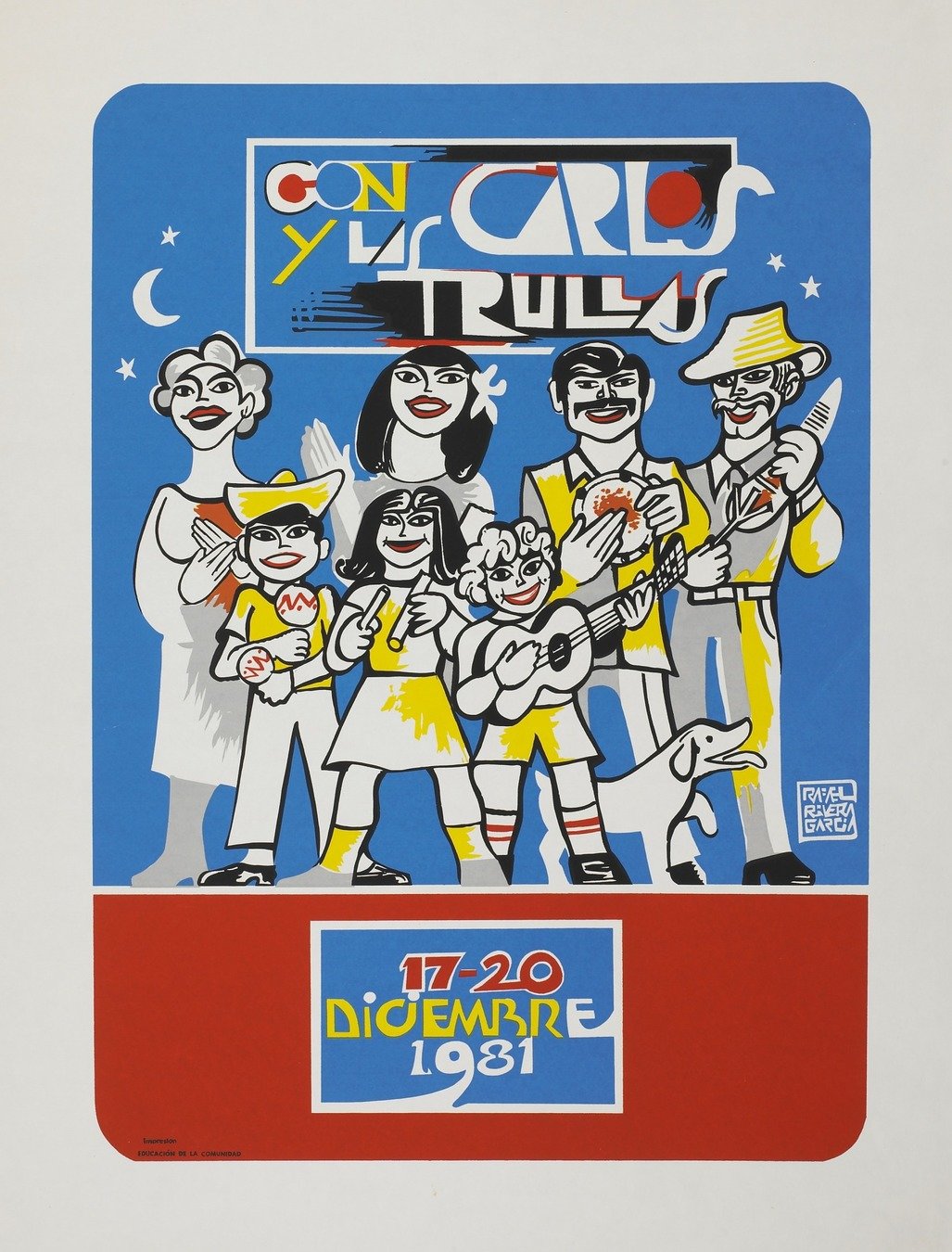
Con Carlos y las Trullas, by Rafael Rivera Garcia. National Museum of American History.

HISTORY & CULTURE
30+ MIN
30+ MIN
20+ MIN
Lesson Hub 3: Música Jíbara: Aguinaldo and the Season of Celebrations
MUSIC MAKING
MUSIC LISTENING

Path 1

30+ minutes
Aguinaldo and the Christmas Season
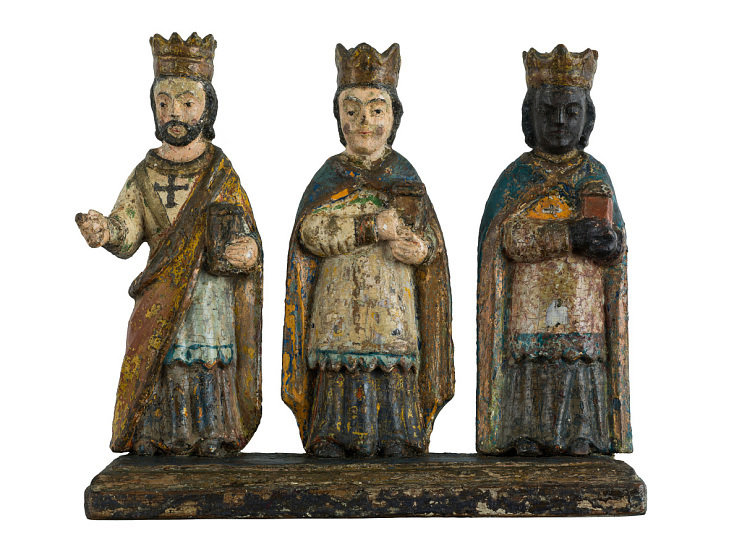
Los Tres Reyes Magos, by the Rivera Group. National Museum of American History.
Attentive Listening

Does this song sound like a Christmas carol? Why or why not?


Christmas, Christmas Celebration, by Marius Iordache. CC0, via Pixnio.
The song you just heard, called "Christmas Carol," is an example of aguinaldo.

What is Aguinaldo?

Three Kings Playing an Aguinaldo, photo by Dr. Rolando Emmanuelli-Jiménez. CC BY-NC-ND 2.0, via Flickr.
In Puerto Rico, this term refers to a type of song and also presents and offerings.
Puerto Ricans often sing aguinaldos as musical gifts during the Christmas season.
Where is Puerto Rico?


The Caribbean (Political), by U.S. Central Intelligence Agency. University of Texas Libraries.
Puerto Rico is an island in the Caribbean Sea. It is located approximately 1000 miles from Miami, FL.
The two most important forms of música jíbara are ...

Aguinaldo and seis
Seis is a secular (non-religious) form of music that features sung (and often improvised poetry).
Click to the next slide to start learning more about aguinaldo.

Left: El Alma de Puerto Rico, cover art by Galen Lawson, Smithsonian Folkways Recordings. Right: Seis Perfomance, featuring Ecos de Borinquen, video still by Smithsonian Folkways Recordings. You can learn more about seis music in Lesson 2.

What Is Música Jíbara?


Música Jíbara is:
- a broad term for Puerto Rican folk songs from mountain regions and rural areas
- an oral tradition
- a fusion of Taíno, Spanish, and African musical influenced.
- influenced by Spanish poetic forms

Jíbaro Hasta el Hueso: Mountain Music of Puerto Rico, cover art by Marlow Palleja Design. Smithsonian Folkways Recordings.
Season of Celebrations!


Aguinaldos are very common throughout the entire Christmas season in Puerto Rico - which lasts six weeks!

Programa de Navidad, by Antonio Maldonado. National Museum of American History.


Día de Navidad: Christmas Day


Adoration of the Shepherds, by Mattias Stomer, {PD-Art|PD-old-100}, via Wikimedia Commons.
Around Christmas Day, Catholic mass services (misa de aguinaldo) are celebrated with aguinaldos.
Do you hear the call and response between soloist and chorus?
What instruments do you hear?
"Promesa de Aguinaldo," from Kacho Montalvo’s ethnographic recording of Aguinaldo de Viejo.

"Promesa de Aguinaldo"


Adoration of the Shepherds, by Mattias Stomer, {PD-Art|PD-old-100}, via Wikimedia Commons.
Lyrics:
La Virgen lavaba (the Virgin washed)
San Jose tendía (San Jose tended)
El niño lloraba (the child cried)
Joaquin lo meció (Joaquin rocked him)

Día de los Reyes: The Three Kings / Epiphany
More aguinaldos are sung on January 6 (Día de Reyes/Epiphany), a day when Puerto Rican children receive additional gifts , delivered overnight by the Three Magi (Kings).
- On the eve, children leave grass in shoeboxes for the Magi’s camels.
- The next morning, they wake up to find gifts left by the Kings!

Explaining the Magic of "Three Kings Day", from the Washington Post.

Promesa de Reyes
Many promesas (rituals of gratitude) are celebrated around the 6th of January.
In exchange, they offer pagamento (payment/offering) through prayer and music (aguinaldo).
During these gatherings, people ask the saints (represented by the Three Kings) for protection and spiritual guidance.
Promesa Papo Capín y Maelo Vázquez, video by Jaime O. Bofill-Calero.
Talla de Santos

Promesas are associated with other age-old artistic traditions, such as Talla de Santos—wooden carvings / sculptures of saints (in this case, the Three Kings/Magi).


Los Tres Reyes Magos, by the Rivera Group. National Museum of American History.
Above: Los Reyes Magos, by the Caban Group. Smithsonian American Art Museum.

Puro Party! (More Fiestas)
The Fiesta de Reyes marks the beginning of the end of the Christmas season: schools reopen and work resumes on January 7.
-
But ... more fiestas are held from January 6–8!
-
This last set of fiestas in the Christmas season are called the Octavas (eighths): religious celebrations in remembrance of the Virgin Mary.


Adoracíon de los Reyes Magos, by El Greco, CC BY-SA 4.0, via Museo Soumaya and Wikimedia Commons.
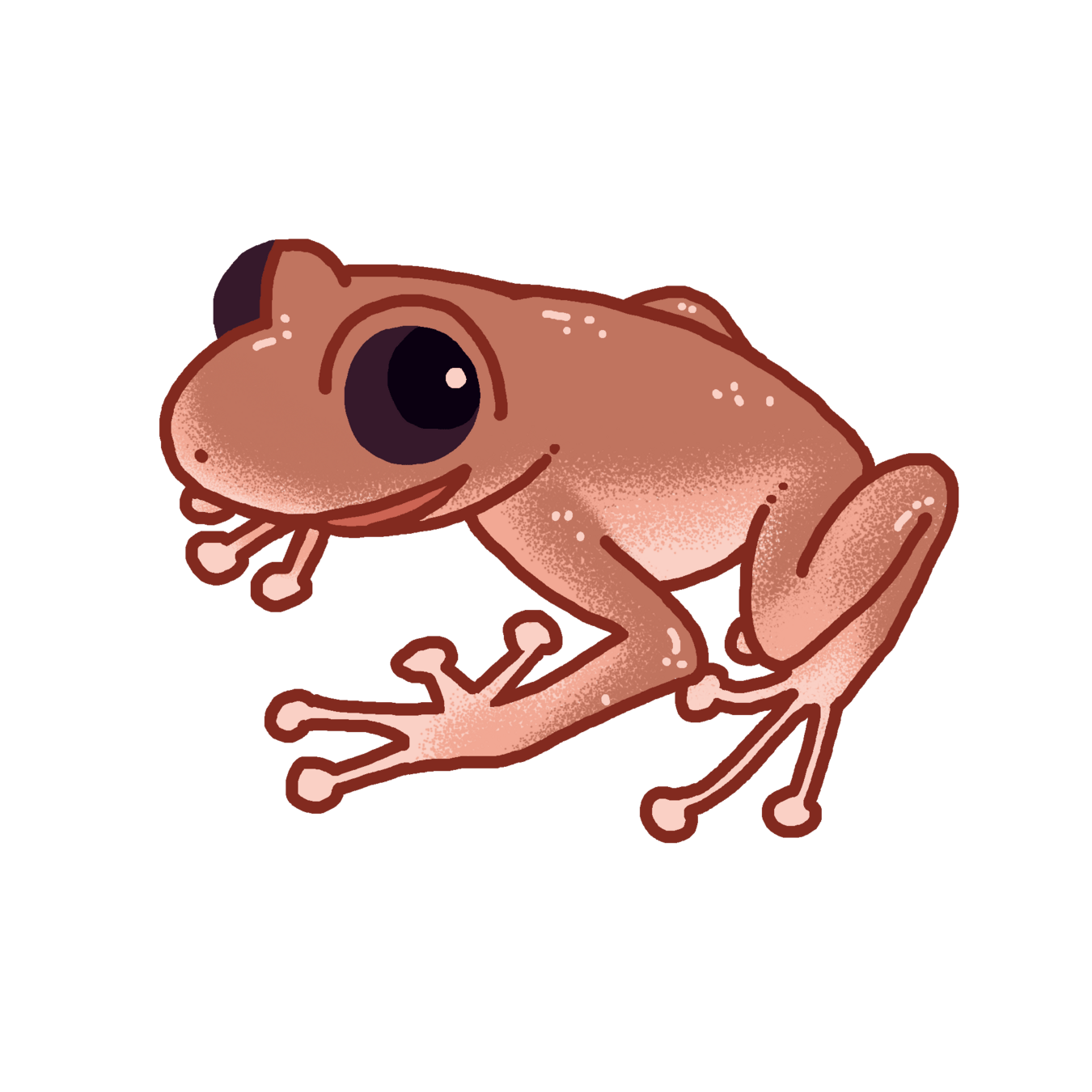
Season of Celebrations: Food!

The lechón asado, (roasted pig) is the most traditional dish associated with the season, served on Nochebuena (Christmas Eve), Navidad (Christmas Day), and Fiesta de Reyes.
Like music, food is central to fiestas throughout the entire Christmas season.
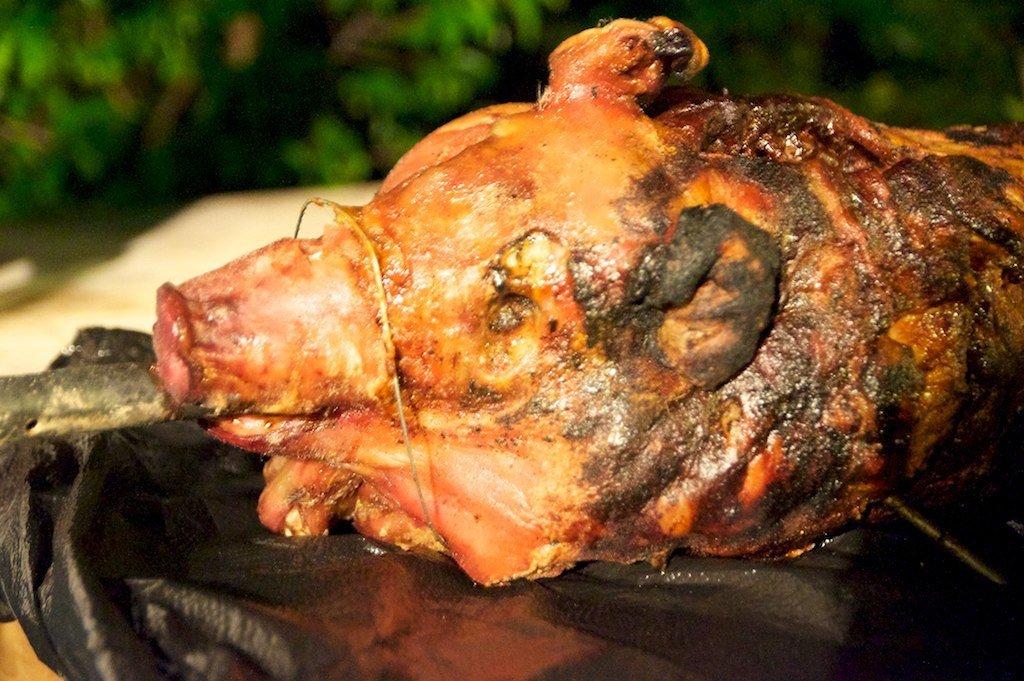
Lechón Asado, photo by Dr. Ronaldo Emmanuelli-Jiménez, CC BY-NC-ND 2.0, via Flickr.

Food and Fiestas: Popular Puerto Rican Cuisine
Roast Pork, Yucca with Mojo, Congri, and Plantains for Christmas Eve Dinner, 2013, photo by Cecilia Peterson. Smithsonian Folklife Magazine.
Click Image for Recipes!
Other examples of Puerto Rican cuisine associated with fiestas include:
- Arroz con gandules (rice with pigeon peas)
- Arroz con dulce (a kind of rice pudding)
- Pasteles (mashed plantains filled with meat and wrapped in boiled banana tree leaves)

Food and Fiestas: "Si Me Dan Pasteles"
Food is so essential to fiestas that many aguinaldos are about Puerto Rican dishes.
For example, the lyrics to "Si Me Dan Pasteles" say:
“If you give me pasteles they’d better be hot, because cold pasteles give people stomachache!”


Pasteles, by Portorricensis, Public domain, via Wikimedia Commons.
Season of Celebration: Christmas Caroling

In Puerto Rico, the terms parranda, trulla, and asalto navideño all mean pretty much the same thing:
Puerto Rican Christmas caroling!

This happens throughout the six-week season, and aguinaldos are a key part of the repertoire.

Parranda!


The term parranda can also refer to the group of Christmas carolers who performs spontaneous, raucous, late-night visits to friends’ homes during Christmas holidays.

Guanica, Puerto Rico (vicinity). At a Three Kings' Eve Party in a Tenant Farmer's Home in the Sugar Country, by Jack Delano. Library of Congress.
"Christmas Carol," performed by Sofia and Ana Iris Parrilla de Falu

"La Parranda Más Grande"
Watch and Listen to the first minute of "Parranda Más Grande de Puerto Rico."

It includes more than 100 participants.
Parranda Más Grande de Puerto Rico, video by Un Boricua Perdido.
This parranda takes place in the town of Trujillo.
Trujillo, Puerto Rico

Map of Puerto Rico, courtesy of freeworldmaps.net
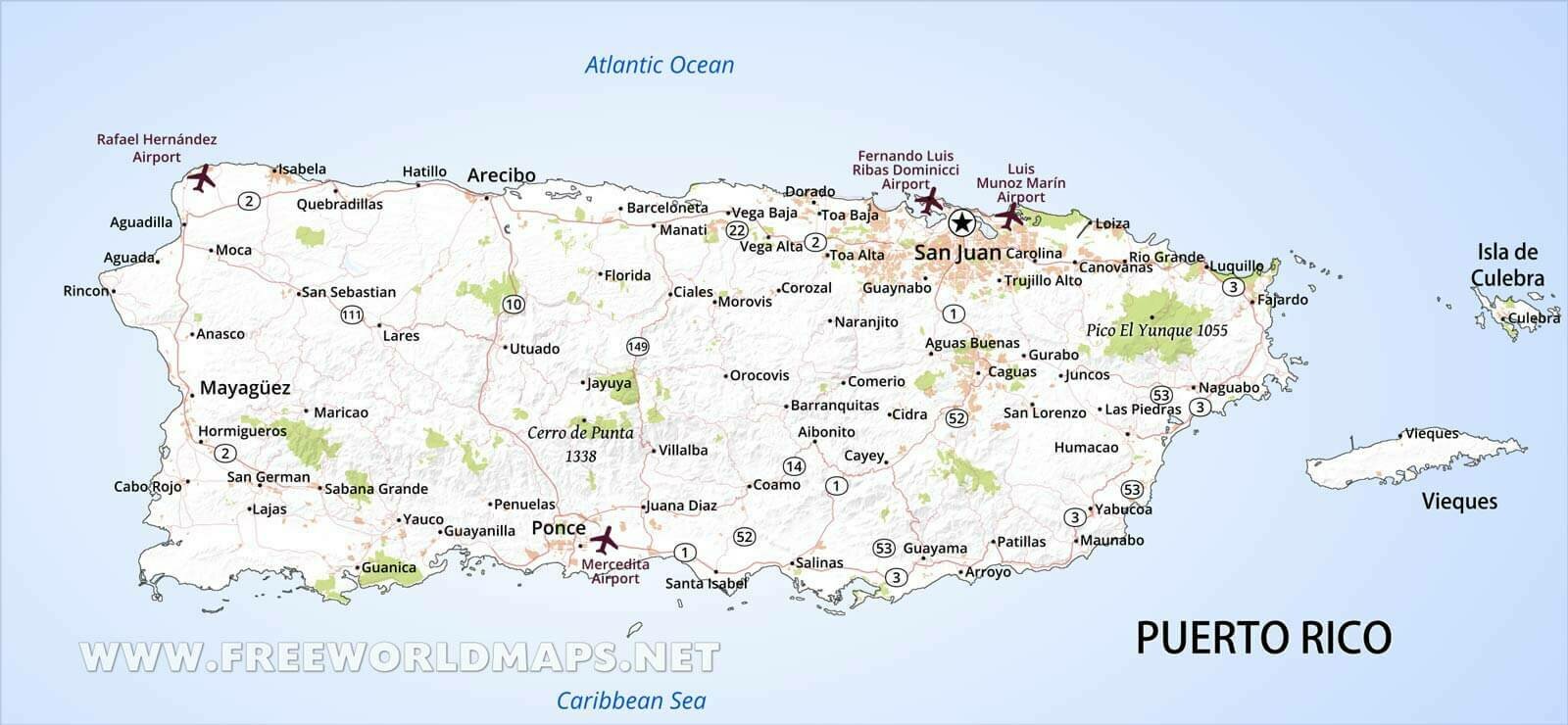

Surprise! Asalto Navideño

Surprise is an essential element of parranda, which is why this unexpected act of strolling from house to house singing songs is sometimes called an asalto (assault).

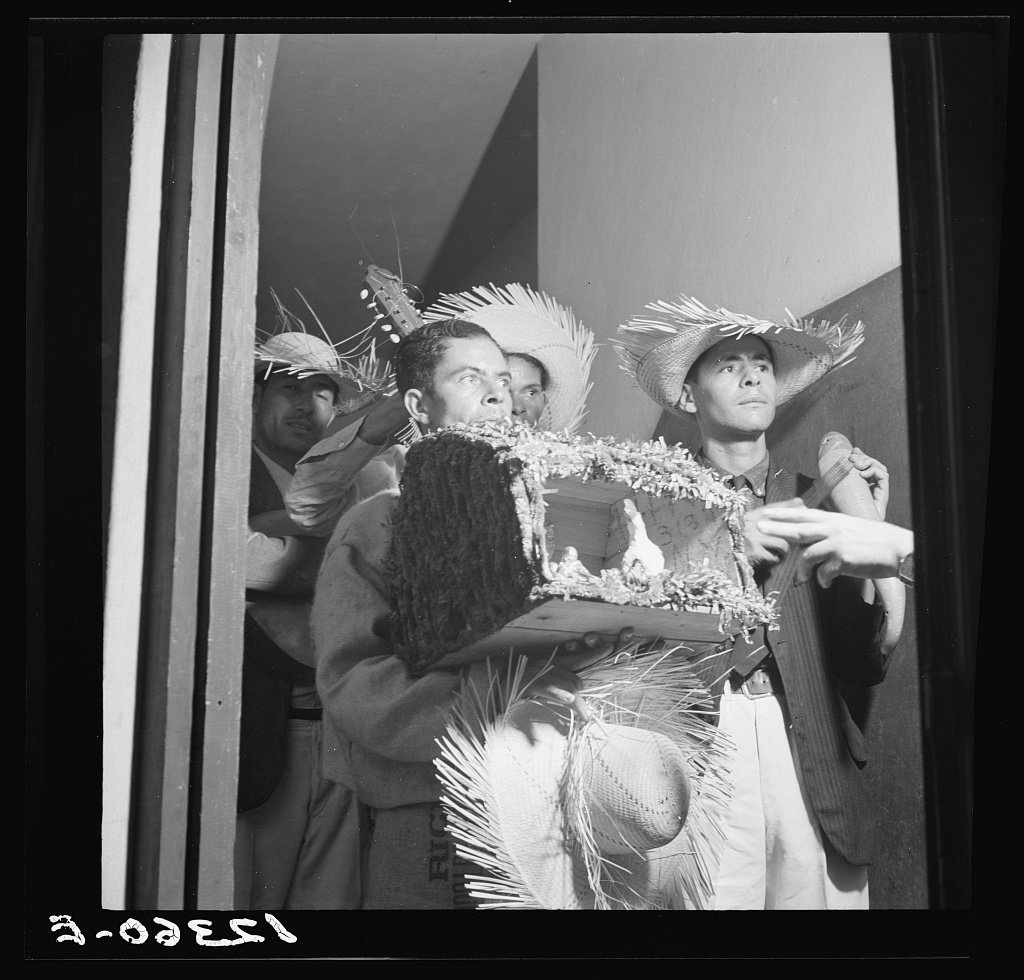
Three Kings Day, Wandering Musicians Carry a Primitive Creche From House to House and Sing for Pennies, In a Student's Boarding House, Rio Pedras, Puerto Rico, by Edwin Rosskam. Library of Congress.


Connections: Fiesta, Food, Family, and Friends
According to author Cecilia Peterson, “There’s a reason so many aguinaldos mention food: it’s what keeps everyone upright when they’re being dragged out of their beds for a month and a half!"

What special holiday traditions does your family or group of friends celebrate that you'd like to share?
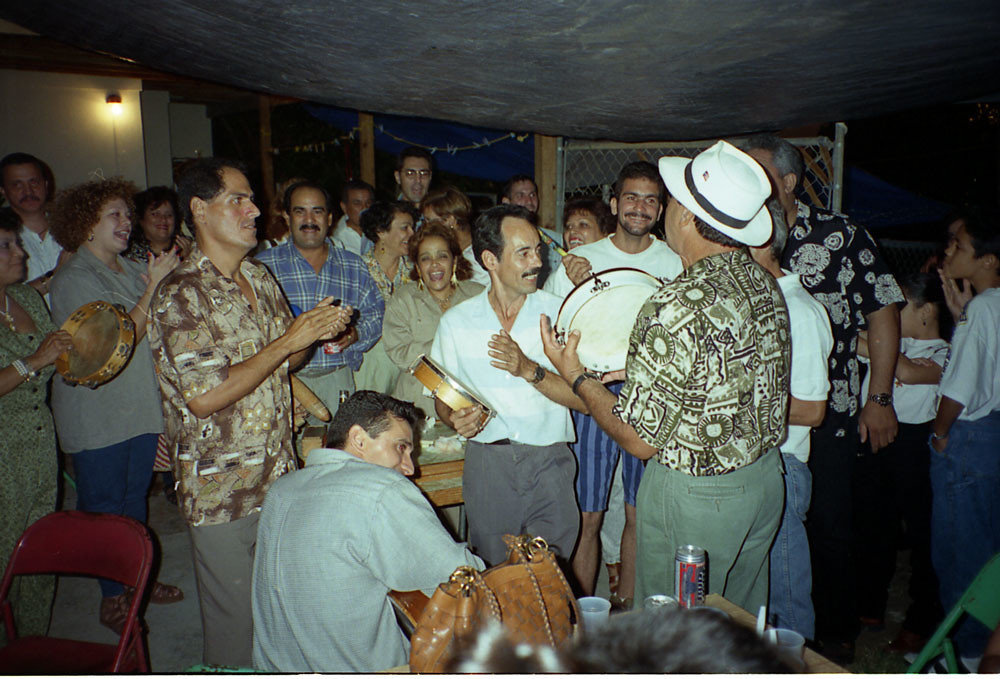
Puerto Rico, Tres Reyes, photo by Ard Hesselink. CC BY-NC-ND 2.0, via Flickr.

Learning Checkpoint
-
What is an aguinaldo and how is it related to the Christmas season?
-
What is parranda/trulla/asalto navideño? What is the social significance of this tradition?
- Why are so many aguinaldos written about food?

End of Path 1: Where will you go next?



Experiencing Aguinaldo
Path 2

30+ minutes

Guanica, Puerto Rico (vicinity). At a Three Kings' Eve Party in a Tenant Farmer's Home in the Sugar Country, by Jack Delano. Library of Congress.

A Quick Review: Aguinaldos

In Path 1 we learned that an aguinaldo is a type of song that is very common during the Christmas season in Puerto Rico.
Christmas season in Puerto Rico lasts for six weeks!
Puerto Ricans often sing aguinaldos as part of a popular cultural practice called parranda or trulla (Puerto Rican Christmas caroling).


Where is Puerto Rico?


The Caribbean (Political), by U.S. Central Intelligence Agency. University of Texas Libraries.
Puerto Rico is an island in the Caribbean Sea. It is located approximately 1000 miles from Miami, FL.


Experiencing Aguinaldo
In Path 2, you will learn more about the history and structure of aguinaldos. Afterwards, you will use this structure to write your own song lyrics.


Engaged Listening: Aguinaldo


Con Carlos y las Trullas, by Rafael Rivera Garcia. National Museum of American History.

"Christmas Carol," performed by Sofia and Ana Iris Parrilla de Falu
Keep a steady beat as you listen!

Attentive Listening: Spanish Villancicos

Puerto Rican aguinaldos have their origins in villancicos: songs that developed long ago in Spain.
Villancicos: Spanish Christmas Songs for Children, cover art by Ronald Clyne. Smithsonian Folkways Recordings.
What do you notice about the structure/form of each song?
"Esta Noche es Nochebuena"
"Canto de Aguinaldo"

Do the titles give you any clues about what the songs are about?
Attentive and Engaged Listening: Spanish Villancicos

What do you notice about the meter?
"Esta Noche es Nochebuena"
"Canto de Aguinaldo"

What instruments do you hear?
Can you hum along with the melody?
What do you notice about the voices?
Can you keep the beat?
Before Aguinaldos: Spanish Villancicos

They were sung in churches and cathedrals, especially during important celebrations like Christmas, Epiphany (Three Kings Day) and saints' days.
Although villancicos have secular (non-religious) roots in Spain, they were first used frequently in Catholic church services during the 16th and 17th centuries.


Villancicos Arrive in Latin America

Over time, villancicos also became a part of popular culture in Latin America - outside of religious contexts.

Puerto Rican Catholic Church with Clock Tower, photo by John N. Choate. National Museum of Natural History.
The earliest performance on record of villancicos in Latin America was in 1539, when they were performed in Catholic cathedrals in Mexico, Peru, Argentina, and Colombia.

The Puerto Rican Aguinaldo Develops

What we now recognize as the Puerto Rican aguinaldo developed from Spanish villancicos during the colonial period (16th–17th century).
Vertical View of a Puerto Rican Cuatro, by Miguel Rodriguez. Photo 162779067 © Miguel Rodriguez | Dreamstime.com.
Aguinaldos are sometimes referred to as "Christmas carols" because they are very popular during the Christmas season.


More Spanish Connections!

Most commonly, decimillas are used:
- ten lines
- six syllables each

Villancicos AND aguinaldos use Spanish poetic forms to structure the composition.


Listening for Decimilla: "Fiesta en el Batey"


"Fiesta en el Batey," by Ecos de Borinquen


Ecos de Borinquen, photo by Daniel Sheehy. Smithsonian Folkways Recordings.
Adding Context: The Batey
The term batey is still used in Puerto Rico and throughout the Caribbean.
People in the community gather there to play music and dance.
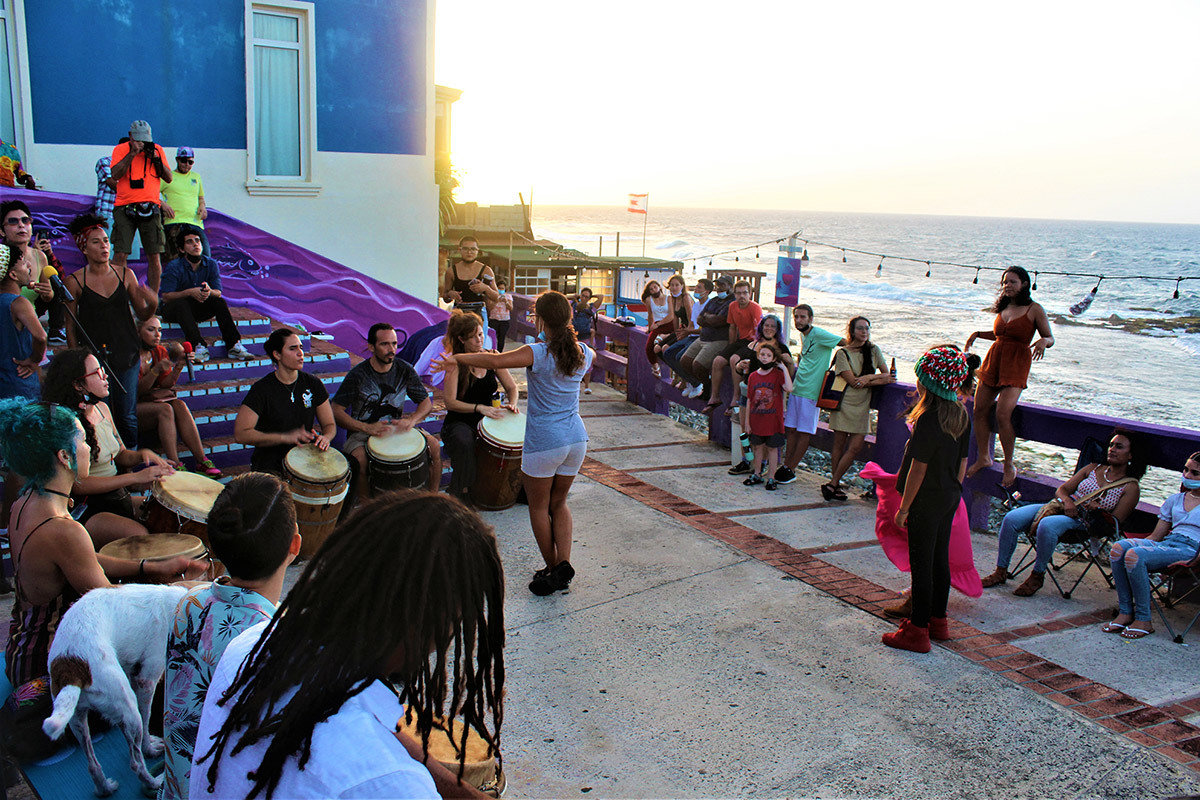
Children Wait Their Turn to Dance in the Community Batey, photo by Mariana Núñez Lozada. Smithsonian Folklife Magazine.

Batey is a word that was used by pre-Columbian Indigenous (Taíno) people to mean a ceremonial gathering space.

Listening for Melody: "Fiesta en el Batey"

As you listen to excerpts from "Fiesta en el Batey," hum along with the melody.


Listening for Rhythm: "Fiesta en el Batey"

As you listen to excerpts from "Fiesta en el Batey," pat along with the rhythm.


Optional: Play the Chord Progression

Listen for and try to play this chord pattern (from "Fiesta en el Batey"):

I V I IV (repeat)
G D G C (repeat)
Put it All Together!

Write and perform your own decimilla for an aguinaldo!



"Fiesta en el Batey," by Ecos de Borinquen

Learning Checkpoint
- How are villancicos related to aguinaldos?
- What are some characteristics of decimilla (a common poetic form used to structure aguinaldos)?
- What were the most rewarding and challenging parts of composing and performing your own decimilla?

End of Path 2: Where will you go next?




Advance to the next Music Making Path:
People and Plena on the Move
Music of Puerto Rico - Lesson 4, Path 2
Find an Intersecting Path:
Interpreting the Blues
Women in the Blues: Lesson 4, Path 3

Instruments of Aguinaldo
Path 3

20+ minutes

Programa de Navidad 1977, by Jose Melendez Contreras. National Museum of American History.

A Quick Review: Aguinaldos

In Path 2, we learned that aguinaldos have deep historical connections to villancicos - another type of festive song that developed long ago in Spain.
The structure of aguinaldos is often based on a Spanish poetic form called decimilla.

In Path 1 we learned that an aguinaldo is a type of song that is very common during the Christmas season in Puerto Rico.

Where is Puerto Rico?


The Caribbean (Political), by U.S. Central Intelligence Agency. University of Texas Libraries.
Puerto Rico is an island in the Caribbean Sea. It is located approximately 1000 miles from Miami, FL.


Instruments of Aguinaldo
In Path 3, you will learn more about instruments that are used in performances of aguinaldos.


Aguinaldo and Música Jíbara

Listen to an example:

Jíbaro Hasta el Hueso: Mountain Music of Puerto Rico, cover art by Marlow Palleja Design. Smithsonian Folkways Recordings.
The aguinaldo is one of the most important types of música jíbara, which is a broad term for Puerto Rican folk songs from mountain regions and rural areas.
"Un sol de esperanza – A Light of Hope," by Ecos de Borinquen

Jíbaro Culture


Pava, unknown maker. National Museum of American History. The pava, a traditional hat used by agricultural workers in Puerto Rico, is a symbol of hard work - a cornerstone of jíbaro identity.
They were born from the cultural blend of the Indigenous Taíno, European, and African groups that coexisted on the island.
Like the jíbaros themselves, aguinaldos are a cultural fusion of African, Indigenous, and European elements.

Originally, the term jíbaros referred to Puerto Rican rural farmers.

Aguinaldo: Listening for Instruments

As you will discover in this Path, the cultural blend of European, Indigenous, and African influences, is visible in the instruments that are often used to perform this music.

Look at this image, as you listen to the audio example again.
What are the cultural influences of the instruments you see and hear?
El Alma de Puerto Rico, cover art by Galen Lawson, Smithsonian Folkways Recordings.
"Un sol de esperanza – A Light of Hope," by Ecos de Borinquen
Aguinaldo Instruments: The Voice

Broadly speaking, aguinaldos emphasize voice as the central instrument.
- In fact, they are sometimes performed a cappella (i.e., no additional instruments)
- But most often, they are usually accompanied by some combination of instruments: drums, hand-held percussion, string, and sometimes even wind instruments.


El Mito-D Beatriz, by Eduardo Vera Cortez. Archives Center, National Museum of American History.
Listen to "Aguinaldo (Año Nuevo) - New Year's Carol," sung by Sofia and Ana Iris Parilla de Falu
Loíza, Puerto Rico

Map of Puerto Rico, courtesy of freeworldmaps.net.


The Voice: African and Indigenous Influences


While it is true that aguinaldos are sung mostly in Spanish, African and Indigenous influences are also present.
For example, some songs incorporate Taíno-influenced words and expressions - such as the Taíno name for Puerto Rico: Borinquen and the Taíno concept of a community gathering space: Batey.
Other songs incorporate an aspirated “s” sound (which is an African influence.)


Listen to "Si Me Dan Pasteles" (“If They Give Me Pastries”).
Puerto Rican pasteles are a cornmeal–like food made of yucca root or banana, and one of the many African gastronomic influences introduced to Puerto Rico.
Pay close attention to the aspirated “s” sound of the words pastele(s) and caliente(s) one of the linguistic influences of African communities.


Pasteles, by Portorricensis, Public domain, via Wikimedia Commons.
Aguinaldos: Listening for African Influences
Aguinaldo Instruments: Chordophones

Aguinaldos are often accompanied by stringed instruments like the guitar and cuatro, which have European influences.

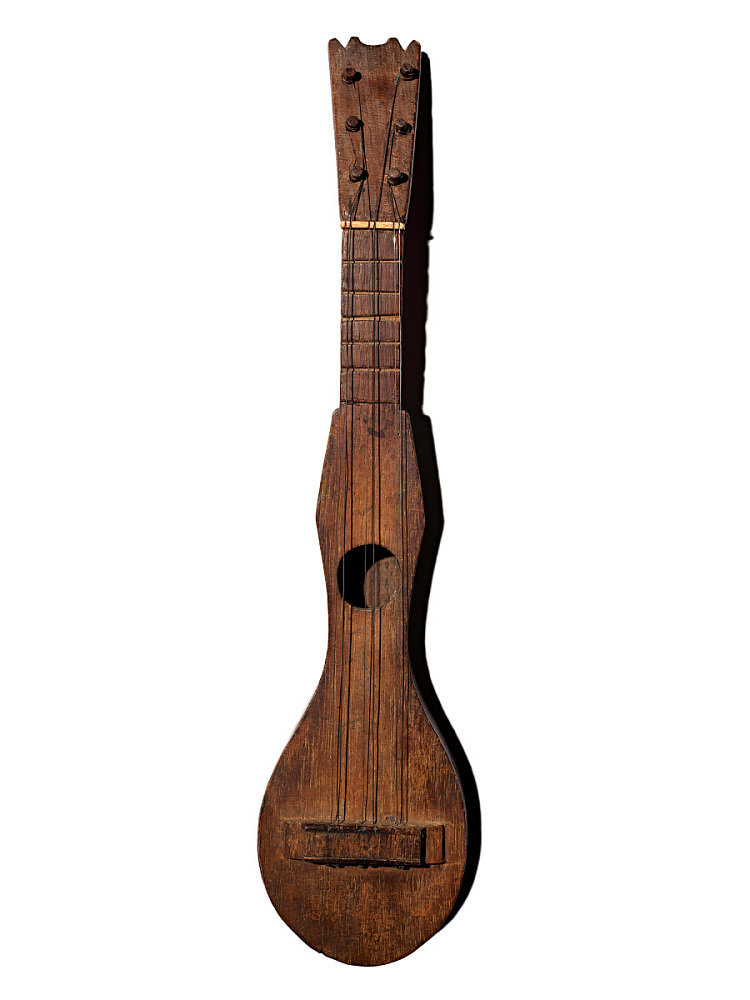
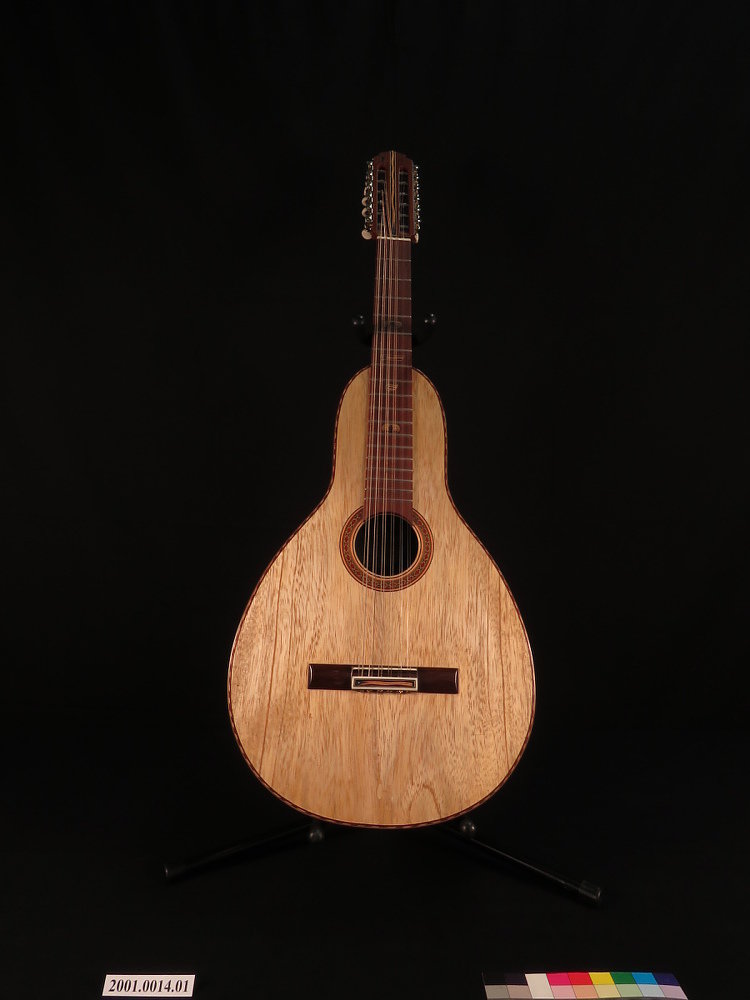
Left: Bordonúa, made by Rafael Avilés Vázquez. Right: Tiple, unknown maker. National Museum of American History.
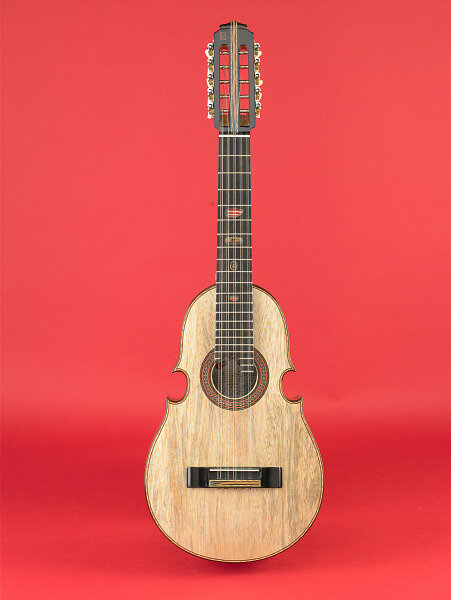
Avilés Vázquez Cuatro, by Avilés Vásquez. National Museum of American History.
"Un sol de esperanza – A Light of Hope," by Ecos de Borinquen

Ecos de Borinquen, photo by Daniel Sheehy. Smithsonian Folkways Recordings.
Attentive Listening: "El Cuatro"


The cuatro is the national instrument of Puerto Rico. Modern cuatros have five courses of double strings.
"El Cuatro" [Live Performance Video], feat. Ecos de Borinquen. Smithsonian Folkways Recordings.

Avilés Vázquez Cuatro, by Avilés Vásquez. National Museum of American History.
Listening for the Tiple: "Aguinaldo de Baquiné"


Listen to an excerpt from “Aguinaldo de Baquine.”
What other instruments do you hear?
Can you pick out the higher-pitched sounds of the tiple?

Aguinaldo Percussion: Güiro and Maracas


Maracas
- played in pairs
- shaken
- made from leather, wood, or plastic



Güiro
- Pre-Columbian (Taíno)
- scraped
- puyero: special pick (scraper)
Güiro, unknown maker. National Museum of American History.
Maracas, unknown maker. National Museum of American History.
Puyero de Güiro, unknown maker. National Museum of American History.
Other Aguinaldo Percussion


Cowbell
- hand-held, metal
- used in salsa music
LP Cowbell, made by Latin Percussion, Inc. National Museum of American History
Pandero, made by Jesus Cepeda. National Museum of American History.
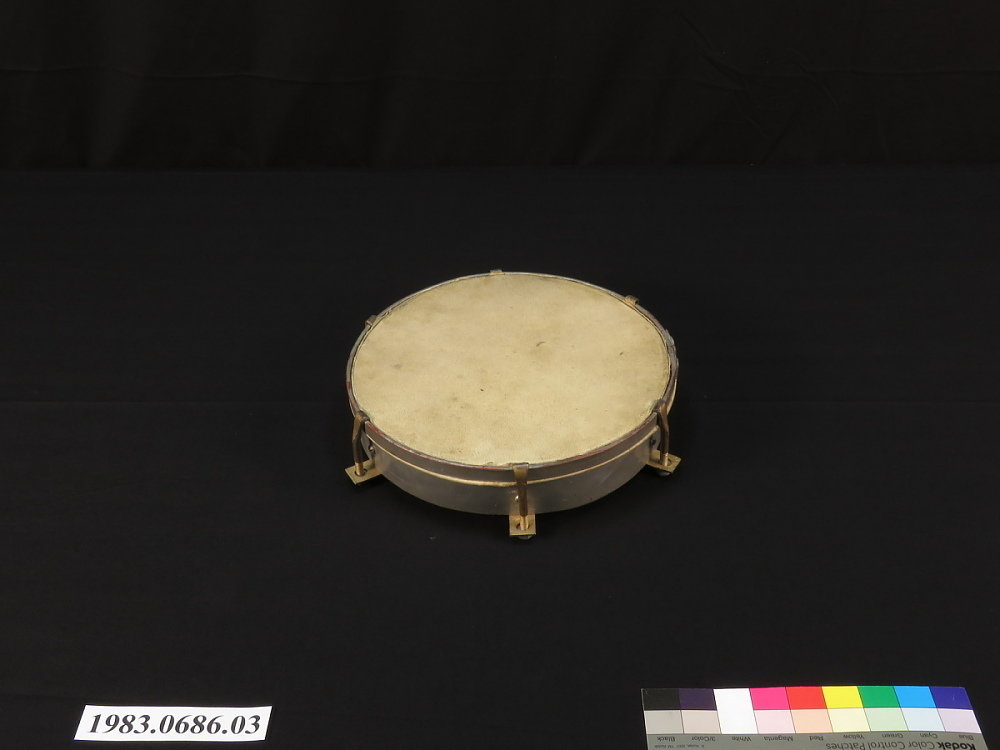
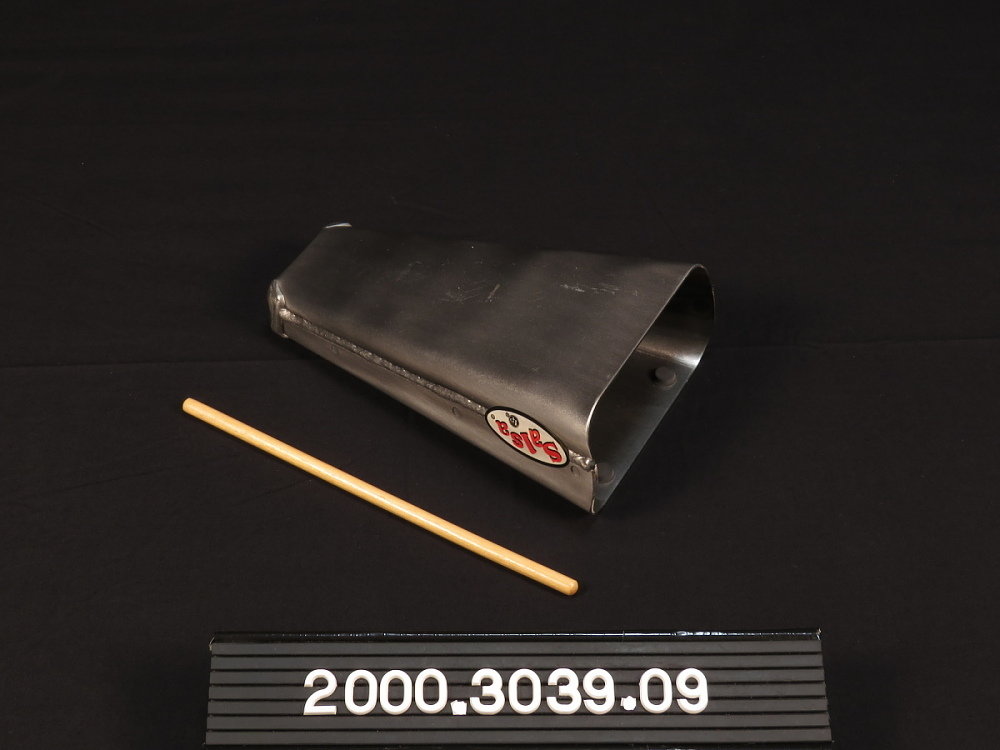
Pandero
- handheld jingle-less tambourines
- often used in plena music
Barril de Bomba (bomba barrel)
-
single-headed
-
wooden-cask drum
-
often used in bomba music
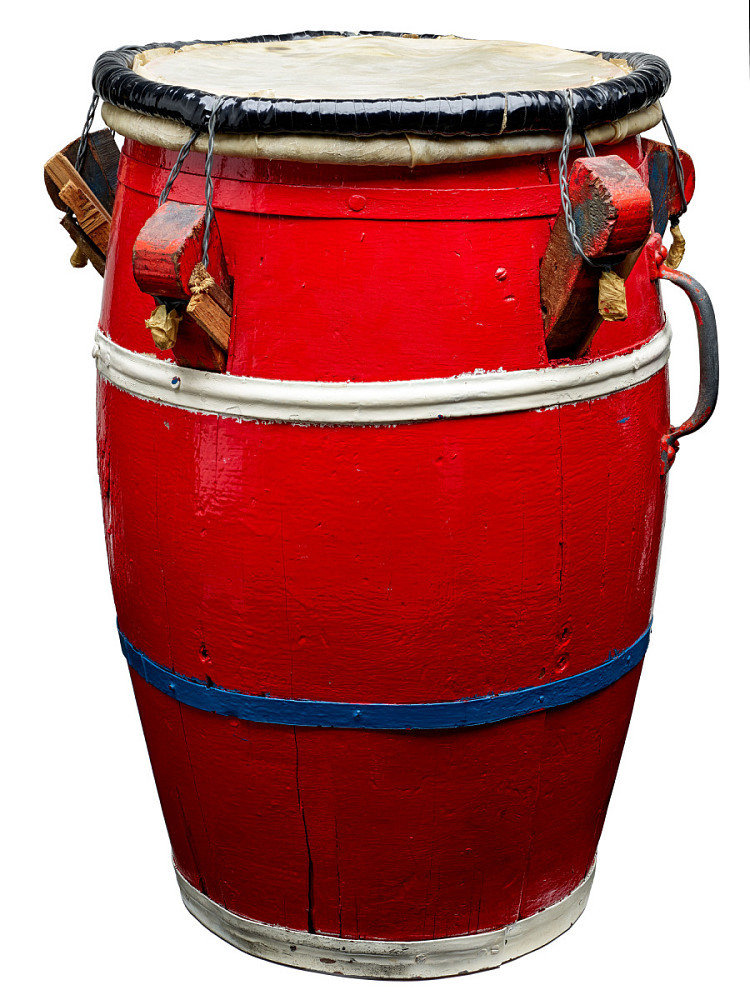
Bomba Drum, unknown maker. National Museum of American History
Aguinaldo: Adding Context


What instruments can you identify?
Watch an excerpt (at least 1–2 minutes) from this performance of aguinaldo in Puerto Rico.
Parranda Navideña en Puerto Rico 2018, uploaded by Conciertos Latinos.


Learning Checkpoint
- What instruments are associated with the performance of aguinaldos in Puerto Rico?
- What do these instruments tell us about the cultural influences of aguinaldos?

End of Path 3 and Lesson Hub 3: Where will you go next?






Lesson 3 Media Credits

Audio courtesy of
Kacho Montalvo Ethnographic Recordings
Library of Congress
Smithsonian Folkways Recordings
Video courtesy of
Jaime O. Bofill-Calero
Smithsonian Folkways Recordings
Images courtesy of
Library of Congress
National Museum of American History
National Museum of Natural History
University of Texas at Austin, PCLP Map Collection
Daniel Feher, www.freeworldmaps.net
Smithsonian American Art Museum
Smithsonian Folklife Magazine
Smithsonian Folkways Recordings

© 2023 Smithsonian Institution. Personal, educational, and non-commercial uses allowed; commercial rights reserved. See Smithsonian terms of use for more information.
This Pathway received federal support from the Latino Initiatives Pool, administered by the Smithsonian Latino Center.
For full bibliography and media credits, see Lesson 3 landing page.




